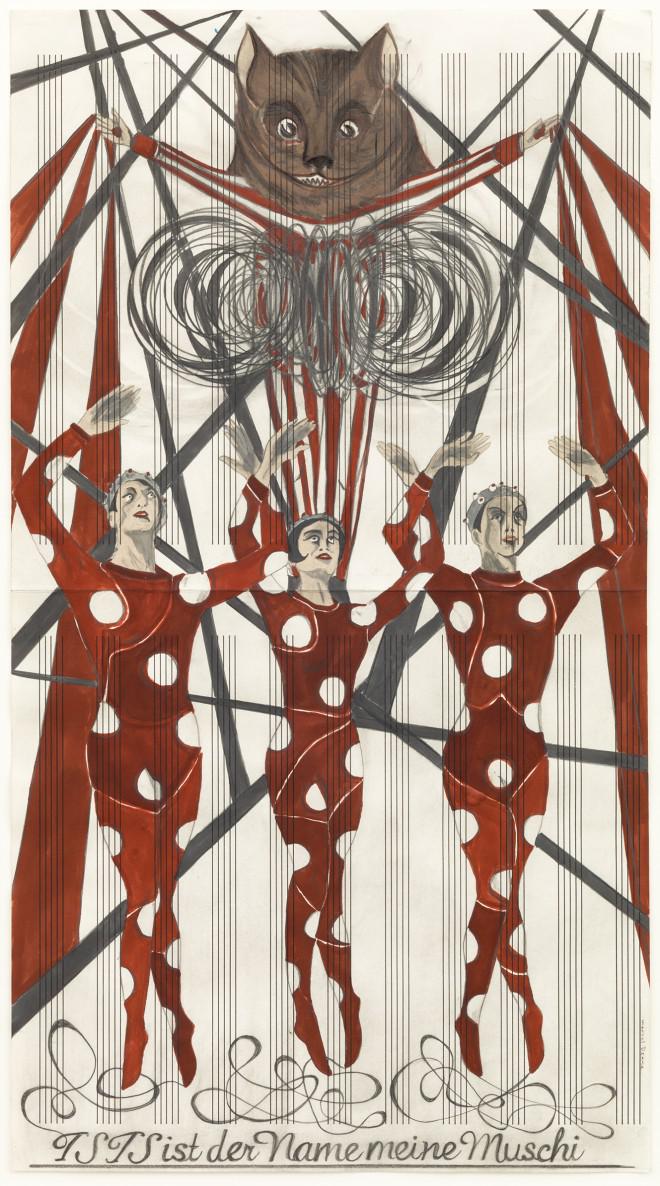I’ve recently begun to work for the first time with video,
making work from both an art and a cinema perspective. Marcel Dzama’s piece Une Danse des Bouffons struck me as
interesting on multiple levels, but because I’ve been thinking about the way
narrative functions as convention in different kinds of video art, I want to
talk about the narrative aspect of the piece.
The film draws on art historical references and contemporary
events, notably the internal conflicts between Western, Iraqi, and Syrian
governments with ISIS. I think the inclusion of both elements factors into the
decision to use narrative. On the one hand, western art history is thought of
as both canon and tradition. It exists synchronically – all the great works of
art ever on the same plane – and diachronically – a progression of ideas from
antiquity to the present.
Narrative is attractive to someone as possessed by
art history as Dzama is because it can resolve the tension between canon and
tradition. In Une danse des Bouffons
characters from across the history of western art act on one another to create
a single plot. Narrative places favourite historical players in the same room so
we can see what they do. Dzama identifies with the two-faced jester–he coerces
the artists and art objects into the video space and watches the action unfold.
It is the violence of this experiment that draws in the contemporary
event. After each character is dragged from his, her, or its own time, Dzama
sublimates them within his own vision as expressed by the mise-en-scène – the
torture chamber, the TV monitor, the live studio camera sets, the game show
scenario in which they are audience and actor. The characters’ dislocation moves
the narrative. The protagonists’ return to their own time, as sculptures in Étant Donnés, resolves it.
Part of the mise-en-scène’s contemporaneity is its reference
to current world conflict. The emphasis on bodily coercion, of the protagonist
by the jester, and on the televised image of the execution and the subsequent
display of the Golden Calf’s head above the judge's body, probably references ISIS’s execution videos
and their critique of Western society’s materialism.
At first I thought Dzama imagines this conflict as political
theatre, which he satirizes through the image of the bouffon, the grotesque which makes us uncomfortable, which we want
to avoid even as we laugh at it. I believe this is part of it, but also
important is the way mass mediated political narratives involve the same
resolution of progress with eternal values as art historical narratives do with
canon and tradition. Western leaders call ISIS a pure and inexplicable evil even
though the conflict contains known historical and political interests. Narrative
resolves the disjuncture between the two positions by welding politics into a tale
about right and wrong.
I found it hard to think of Dzama’s piece as cinema. This
probably has a lot to do with the gallery setting – but maybe also that while
cinema usually takes on narrative a given and thinks of film/video as a
story-telling medium, Dzama’s use of narrative is tailored to its subject. It
serves a purpose, and the viewer recognizes narrative as a quality of the work
with its own specificity, not so all-encompassing as to prevent other qualities
from taking the fore – the long intervals of the jester’s dance, the
gratuitousness of the torture scene, or the attention to detail in the historical
references themselves. Dzama’s piece showed how narrative could be used in
video and film without overwhelming the whole, its power to create meaning
intact, but intentional and under control.

No comments:
Post a Comment